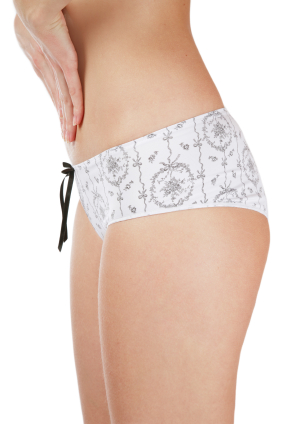Liposuction is one of the most sought-after cosmetic surgical procedures since its introduction in 1976. It was intended to remove unwanted localized fat collections, employing the use of general anesthesia to control pain.
 Complications plagued the traditional or otherwise known as “dry” method of liposuction, due to massive fluid shifts, extensive blood loss requiring blood transfusions, and long recovery period.
Complications plagued the traditional or otherwise known as “dry” method of liposuction, due to massive fluid shifts, extensive blood loss requiring blood transfusions, and long recovery period.
In 1987, the “super wet” or tumescent technique of liposuction was devised by American dermatologist Jeffrey Klein to lessen the risks associated with the earlier method.
What Is Tumescent Liposuction?
Tumescent liposuction refers to infiltration of targeted fat cells with diluted solution made up of a local anesthetic, lidocaine and the blood constrictor, epinephrine.
Tumescent liposuction results in lesser blood loss and postoperative pain, swelling, and bruising. The use of lidocaine allows you to skip the whole process of general anesthesia, thus making it possible for lesser complications, down time and hospital bills.
Tumescent means “swollen.” Upon the delivery of the solution, swelling ensues in the fat cells, hence the term Tumescent Liposuction. The swelling and firmness of the cells amplify the targeted areas for liposuction, making it easier to manipulate the tube with less tissue damage.
Advantages over Traditional Liposuction
- The use of local anesthesia lessens the risks related to general anesthesia.
- Down time is less.
- Less blood and fluid loss
- There is no need for intravenous fluid replacement.
- Lidocaine has antibacterial action, thus preventing infection.
- Lidocaine is fat-soluble so it is suctioned out with the aspirated fats
- The cannula used for tumescent liposuction is smaller and less invasive.
- Gradual and more controlled removal of the fats
- Lesser scarring due to the smaller incisions.
- High safety profile
Risks and Considerations
As a surgical procedure, tumescent liposuction carries some degree of risk although it is considered to be remarkably safe with minor side effects. Among these risks are:
- Skin irregularity
- Dimpling
- Lumpiness
- Loose skin
- Infections
- Scarring that necessitates revision
In extreme cases, toxicity to lidocaine and accumulation of fluid may happen if too much solution is injected into the area, making it harder for the body to eliminate the drug. Fluid could settle in the lungs and lead to serious health problems.
Is Tumescent Liposuction for Me?
You are suitable for this plastic surgery treatment if you are in good physical health, can commit to eating a well-balanced diet and doing regular exercise, and have realistic expectations. An ideal candidate must not be more than 10-20 lbs overweight.
Tumescent liposuction can remove any unwanted fats from almost all body areas that do not respond to regular exercise and diet. When there is too much excess fat to be removed, an adjunct treatment of skin tightening will be necessary. The procedure is not a treatment for cellulite, although improvement of its appearance after the removal of fats can be remarkable.
Your psychological stability matters because some patients place their happiness on the outcome of tumescent liposuction. Your motives for undergoing this procedure must be well-founded and not because you think it’s the way to save a failing marriage or increase your chances of getting employed.
In addition to its aesthetic purposes, Tumescent liposuction is also effective in the removal of lipomas (benign fatty tumors), reducing enlarged breasts, and controlling excessive underarm sweating.
Before the Surgery
Your doctor has to extract a thorough medical history and conduct a physical examination and laboratory tests to check your general health status. At this time, you could ask for a quote on how much the tumescent liposuction will cost you. The process of the operation itself will be explained so you will know what to expect. Before and after surgery photos are usually taken.
During the Surgery
Tumescent liposuction is usually performed on an outpatient basis that will take about 1 to 3 hours, depending on the scope of the areas for correction. Injections of the solution will be applied directly to the areas of excessive fatty deposits. After a small incision to the skin, the cannula or small tube which is connected to a vacuum-like machine will be inserted into the fatty layer.
The fat will be sucked through the tube into a sterile collection system, using back and forth motions. An elastic compression garment will then be applied to facilitate contraction and healing. This will help control swelling and allow the skin to adjust to its new contour.
After The Surgery
Once the tumescent liposuction has been completed you should expect some swelling, bruising, temporary numbness, and pain or burning sensation. Some amount of fluid may be draining from the site of incision. Sometimes a rubber tube has to be left in place for 3 days to prevent fluid build up. You will be prescribed with analgesics to relieve pain, and antibiotics to avoid infection.
You may return to work 1 to 2 weeks following tumescent liposuction but you may only resume strenuous activities in 3 to 4 weeks, at which period the swelling and bruising are expected to resolve.
Significant changes can be appreciated immediately, but will gradually improve further once the swelling subsides. At 3 to 6 months, the optimum results will be observed and with proper diet and exercise, it could lead to a permanently sculpted figure.
Cost of Tumescent Liposuction
Costs could vary depending on the areas to be treated, the city where it will be performed, and the expertise of your plastic surgeon. Approximately, expect a range of around $3,000 to $8,000.
